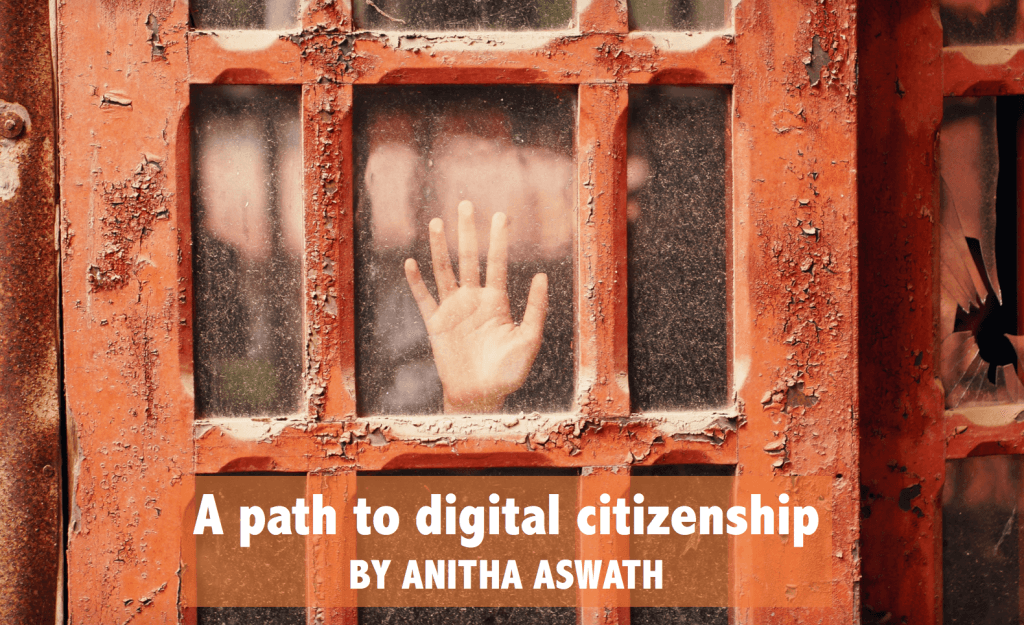
By Anitha Aswath {grow} Community Member
Freedom is a core human value. It is sacred and pristine. But how do we preserve this in a world of fake news, bullying, hate, and all that comes with the constant hum and buzz of social media?
Two weeks ago, Germany passed a new law that requires companies to delete illegal, racist, fake news, and slanderous posts on social media or face fines up to €50 million (approximately $57 million US). Could this have drastic consequences on freedom of speech? Very likely. And could this be a reflection of how social media has unfortunately caused bitter discord, propaganda of divisive politics, and the spread of hate groups? Sadly, yes.
Preserving freedom in this environment requires us to view the world and the events around us with a different lens. And today, we have the gift of social media that allows us to do that in a compelling manner. It allows us to share ideas and stories. It helps us learn from each other and grow.
So, as stewards of responsible, digital citizenship, how can we begin the process of viewing freedom differently? Here are four ideas:
1. Accept that Hard is Hard.
“Hard is hard.” These words are from a TED talk by Ash Beckham that went viral in 2013. In her powerful and moving talk, she shared a new-found awareness of the universal oneness of struggle.
There is no risk-management plan that can defy the pain of a divorce, the death of a loved one, or a career transition. There’s also no such thing as “harder.” The pain and loss that comes from suffering is unique and yet, universal. There is no measurement. We don’t receive a hardship allowance based on how our suffering is worse, in comparison to someone else’s. There is no caste system of victimhood.
And yet, I sometimes read or hear accident announcements that state: “…most of the fatalities include women and children…” Really? So the loss experienced by the families of those men is somehow less than the loss experienced by the families of women and children? When we start to “measure” hard, we start to create exclusion and a hierarchy of grief. Hard is not relative. Hard is Hard. We need to understand the price of hardship to truly value the gift of freedom.
2. Understanding Intersectionality
In June 2017, the The New York Times published an article about an incident during a lesbian march in Chicago. In summary, three women carrying Jewish pride flags were kicked out of the celebrations because their flags were a “trigger.” The organizers didn’t want anything remotely close to the Jewish Pride symbol. They said that the fabric “made people feel unsafe.”
The editor talks, at length, about Intersectionality. However, when American Civil Rights advocate Kimberle Crenshaw first coined the term, her vision was different. She wanted to use the law to highlight avenues through which oppression was experienced so it could be discussed and understood [read more on The Washington Post]. But in practice, intersectionality appears to have moved away from its original intent. It is now a recognition system that rewards those that are ‘higher’ in the hierarchy of oppression.
So what can we learn from this? First, the dichotomy of intent vs. outcome and how it creates newer forms of division. And secondly, how these divisions are used to fight for the same visibility and respect we seek but refuse to give others. Freedom cannot be found in a land of division. We have one life and many lessons to continuously improve who we are and what we do. It is our responsibility to use these lessons for the sacred, fulfillment of human experience. Every. Single. Day.
3. Celebrating Choices
The path to freedom lies in celebrating choices … our own and those of others. Both similar to and different from ours.
During my 19-year career, I have been in individual contributor and leadership roles. The decision to be in both was my own. As an individual contributor, I observed and learned from some of the very best (and the worst). As a leader, I worked hard to keep my team and our business at the forefront of everything we did. I learned to lead with love and compassion.
The many mistakes I made taught me to be humble and gracious when I was wrong. I experienced the joy and terror of unlearning everything I thought I knew. It empowered me to celebrate choice. And it taught me to take responsibility for the consequence of that choice.
4. Practicing Restraint in Freedom
Last month, I read a very interesting post by Mark Schaefer on why he disagreed with Joe Pulizzi on today’s content marketing dynamics. Towards the end, Mark wrote:
“I love the fact that they (Robert Rose and Joe Pulizzi) disagreed with me and I hope this sort of dialogue sets an example that any of us can disagree with each other without being caustic or disrespectful. That’s how we move the world along…”
What a great example of practicing restraint while still being true to his views. It takes only that much to keep furthering the purpose of the human race. To listen, learn, and move forward with the power of insight and respectful disagreement.
And finally, here’s what I learned from a blog post by the CEO of Wholebeing Institute. She talked about the need to restrain behaviors that undermine freedom. Because the structure of freedom, both individually and collectively, must involve restraint. Perhaps, that is the sweet spot where we can become more mindful of our actions.
It is a disciplined practice where we learn that Freedom Exists, with or without us. What needs to change is our perception of identity and its relationship to power. After all, real power and freedom come from Love.
These are my ideas on what is needed to get through a world of social media hate and discord. What do you do to handle these stresses?